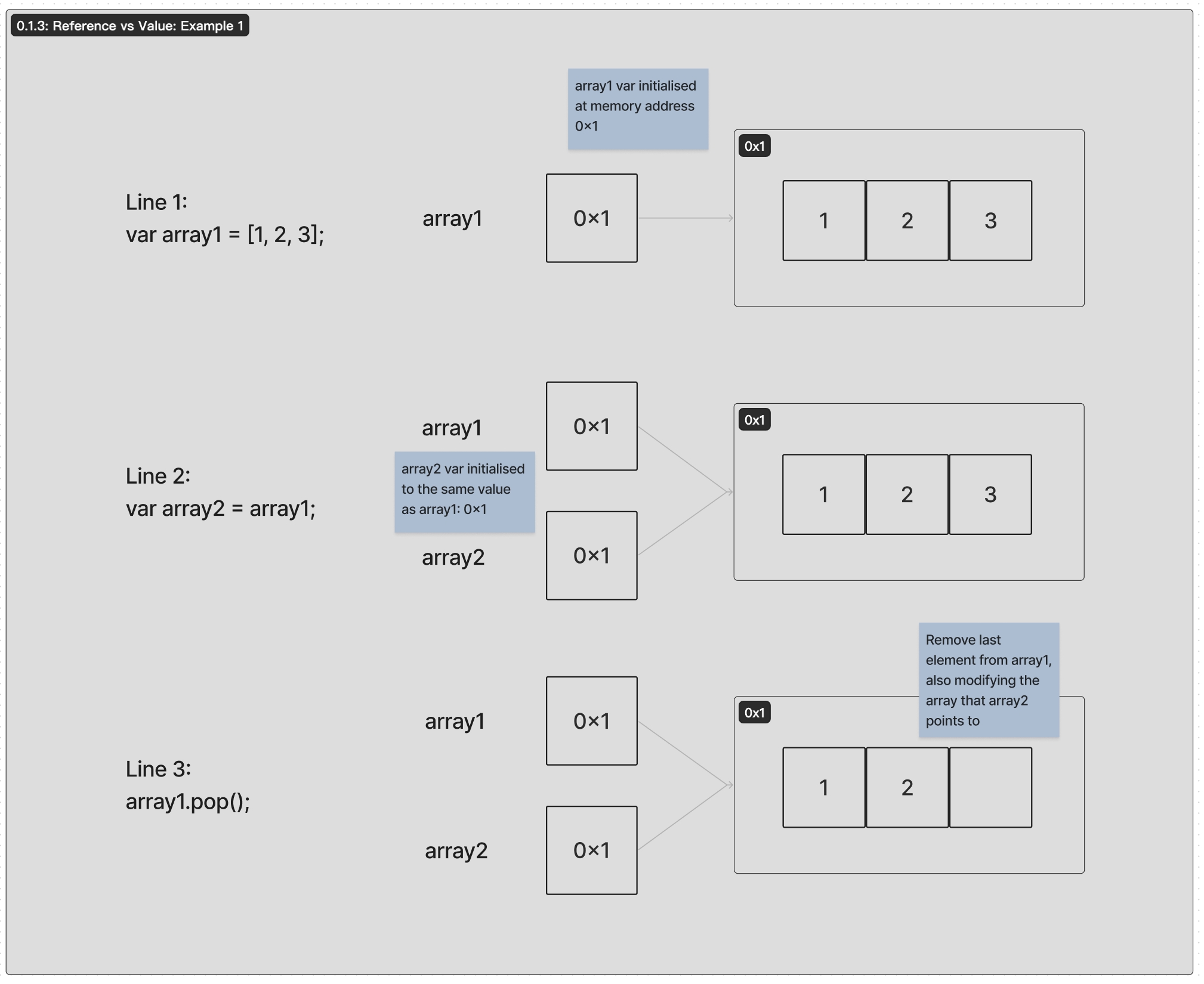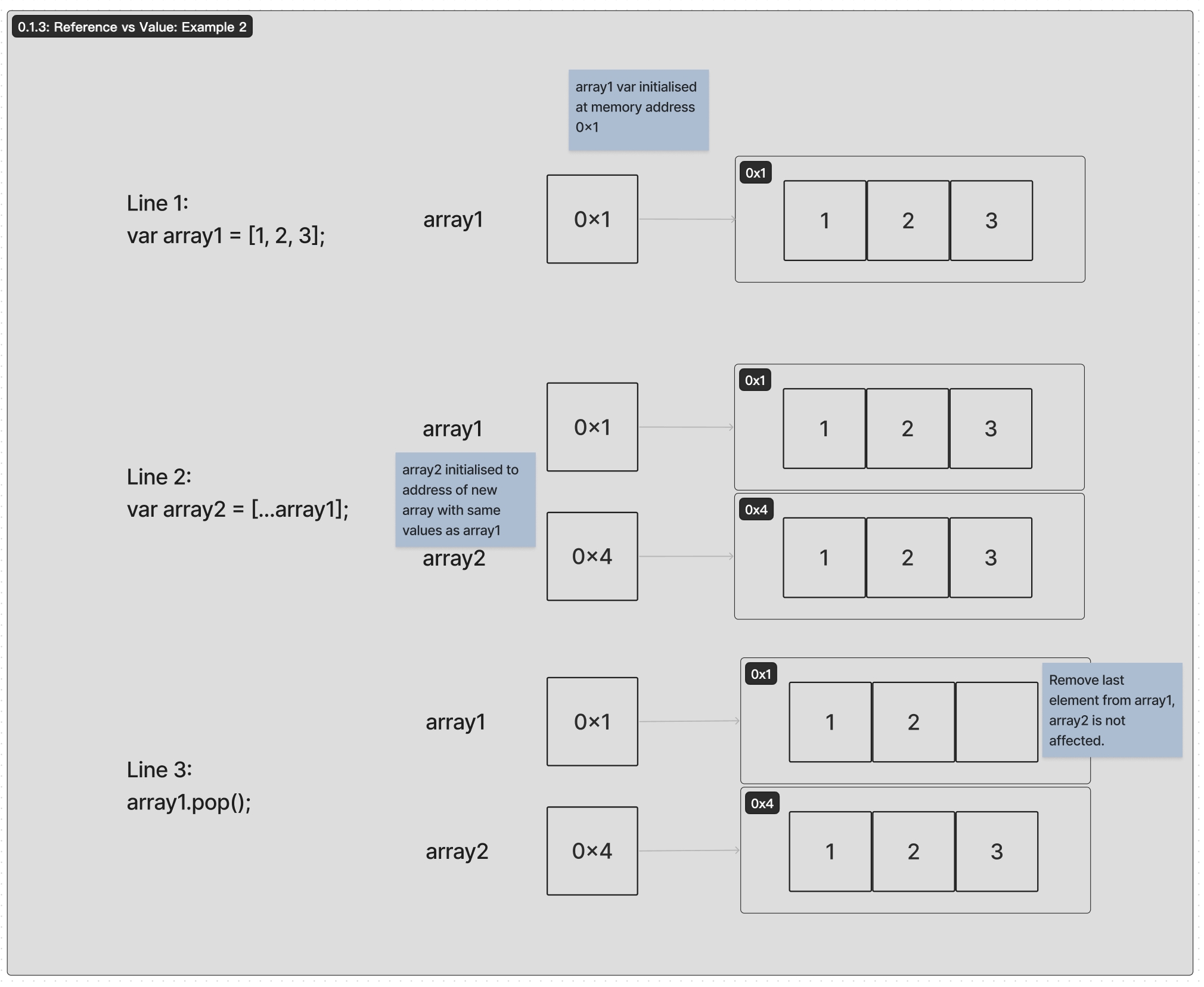0.4.3: Reference vs Value
Learning Objectives
Difference between mutable and immutable data types
Mutable data types are passed by reference (address) and immutable data types passed by value
How to make an independent copy of a mutable data type
Introduction
What will array2.length return in the final line?
var array1 = [1, 2, 3];
var array2 = array1;
array1.pop(); // Remove the last element from array1
console.log(array2.length);array2.length above returns 2. We assigned array2 to array1 and arrays are mutable data types, hence array2 references the same data as array1. Mutable data types are passed by reference and not by value.
If we wanted to copy array1 into an independent array2 variable, we could run the following code instead.
var array1 = [1, 2, 3];
// "..." syntax in front of an array is called the spread operator
// The spread operator copies all elements in an array
// The surrounding [] encapsulates copies of array1's elements into a new array
var array2 = [...array1];
array1.pop(); // Remove the last element from array1
console.log(array2.length);Mutable and Immutable Data Types in JavaScript
Mutable data types are passed by reference. To make a copy we would use the JavaScript spread operator or a loop, not direct assignment to a new variable.
Immutable data types (aka primitive values) are passed by value. To make a copy we would assign the old variable to a new one, and any changes to either variable would not affect the other.
Boolean
Immutable
Number
Immutable
String
Immutable
Array
Mutable
Object
Mutable
Function
Mutable
Mutable and Immutable Data Types in Computer Memory
Computers store data broadly in 2 places: memory (RAM) and drive (SSD or disk). Memory is smaller, faster storage and drive is larger, slower storage. Apps run in memory and persistent data is typically stored in drive.
JavaScript references mutable data types with memory addresses because we do not know beforehand how large these data structures will be. JS can store the value of immutable data types directly without a memory address because immutable data types have a fixed size.
Consider the 2 examples at the start of this submodule. The following diagrams illustrate conceptually what happens in memory after each line of code.
Example 1:
var array1 = [1, 2, 3];
var array2 = array1;
array1.pop();
Example 2:
var array1 = [1, 2, 3];
// "..." syntax in front of an array is called the spread operator
// The spread operator copies all elements in an array
// The surrounding [] encapsulates copies of array1's elements into a new array
var array2 = [...array1];
array1.pop();
Additional Resources
This video explains reference vs value with a live coding example.
This video explains in more detail how arrays are stored in memory.